A few New Mexico insects: Grasshoppers and their kin
(Orthoptera)
I don't like grasshoppers, or this web page would show a lot more of them. They're shown alphabetically within taxonomic level. If you see an error, please let me know via the contact tab at the top of the page.
Some insects, including grasshoppers, don't pass from the larval stage directly to full adulthood (the way a butterfly does, for example). Instead, they go through intermediate stages of growth (during which they're known as nymphs). The picture that follows shows an empty grasshopper exoskeleton, discarded as the grasshopper nymph grew too large for it.
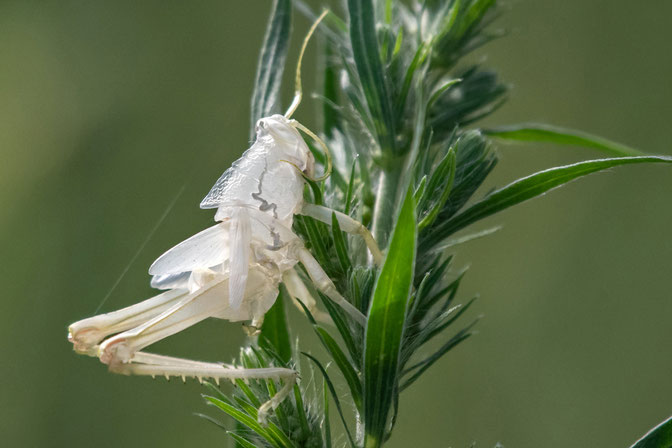
Acrididae: Red-Winged Grasshopper (Arphia pseudonietana)
A coal-black grasshopper with blood-red patches on its wings. You'll see those as as it flies with a clatter. Look for this one in open areas late in the year.
Acrididae: Wrangler Grasshopper (Circotettix rabula)
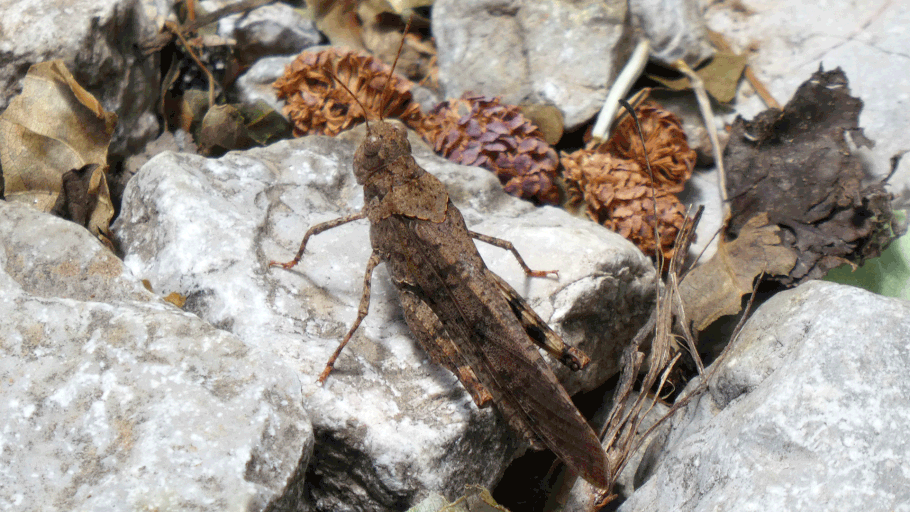
According to the Field Guide to the Sandia Mountains, "The Wrangler grasshopper ... attracts attention on warm summer days because the males perform mating flights where they hover above the ground making loud snapping and cracking sounds." That's how this grasshopper got our attention. The Field Guide goes on to state, "These grasshoppers prefer high-elevation open rocky areas," which characterizes much of the Ellis Trail.
Acrididae: Carolina Grasshopper (Dissosteira carolina)
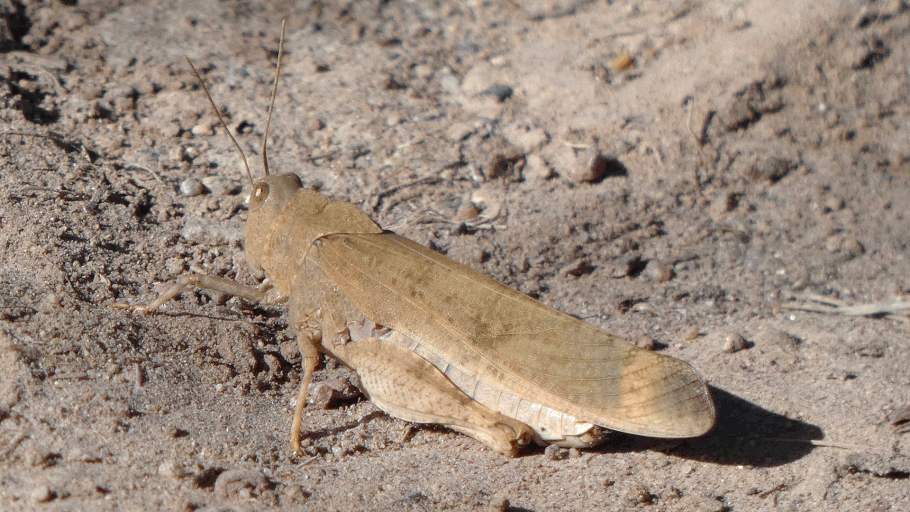
I first saw this grasshopper on the fly, and its dark wing patches gave away the ID.
Acrididae: Differential Grasshopper (Melanoplus differentialis)
The yellow differential grasshopper I photographed in July 2023 was hanging head-down. I rotated the picture to better fit it into the format used here.
Texas Slant-Faced Grasshopper (Mermiria texana)
Acrididae: Mischievous Bird Grasshopper (Schistocerca damnifica)
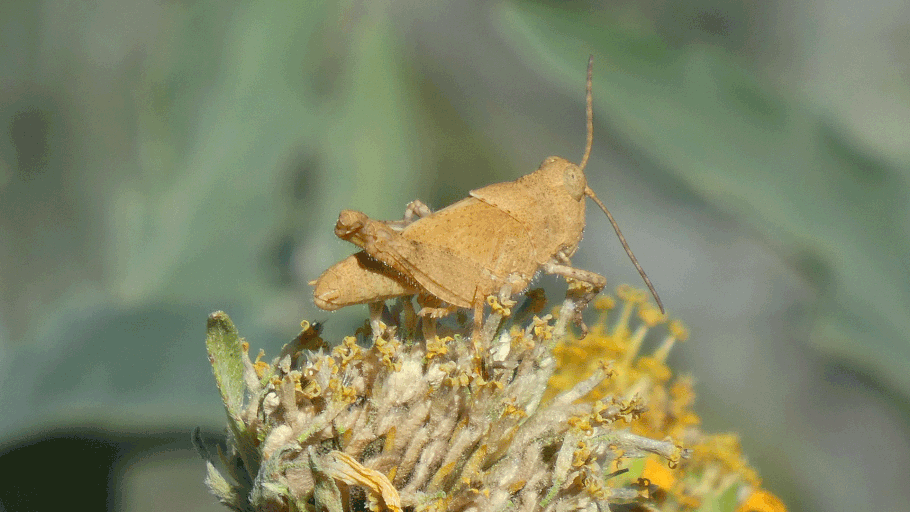
My tentative identification of the species for this grasshopper relies heavily on the uniform coloration.
Tettigoniidae: Katydid nymph

When I took this picture I thought it was of an assassin bug. Looking at the robust upper hind legs and delicate forelegs, among other things, I'm identifying it as a young katydid nymph. Some species in the family have evolved to mimic assassin bugs when a young nymph, and this seems to be one of those cases. No idea which species (there are more than 6,400 worldwide) or even which genus.
Tettigoniidae: Two-Lined Shieldback (Eremopedes bilineatus)

The two short brown "horns" at the end of the abdomen mark this katydid as a male. The abdomens of the females have long pointy extensions.
Tettigoniidae: Angle-Wing Katydid (Microcentrum)
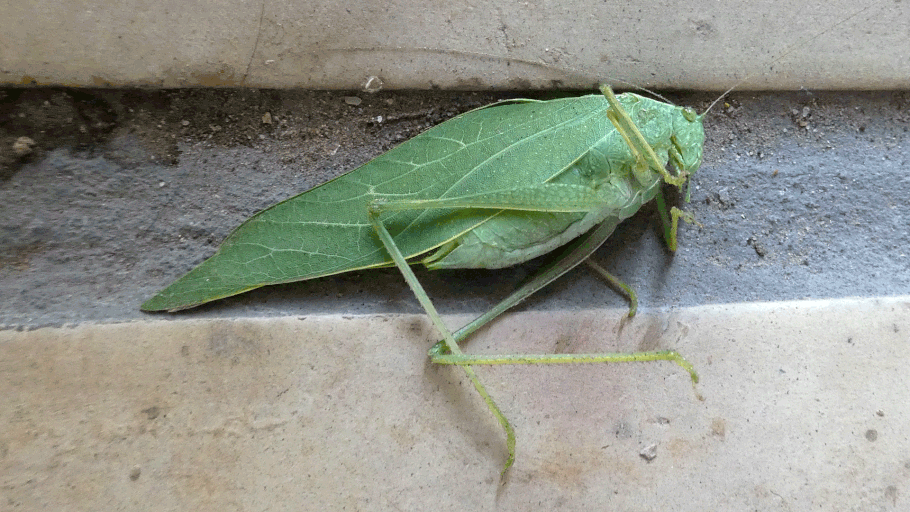
I found this katydid dying on my front porch one morning. It was lying in a 1 inch (2.5 cm) wide grout channel, which provides a scale.
Tettigoniidae: Bush Katydid (Scudderia)















